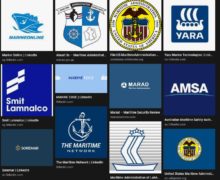
MARITIME HISTORY IN CHRONOLOGICAL ORDER – Compiled by F R Chowdhury (1st Batch)
1492 – Christopher Columbus sails from Spain and discovers the new world. (The continents of North and South Americas are commonly known as the new world).
1783 – Steam power was used for the first time to propel a boat.
1788 – First paddle steamer was made. Steam power was used to rotate two large wheel-like paddles on either side of the steamer.
1805 – Battle of Trafalgar. The famous battle in which British Admiral Nelson defeated Napoleon’s Naval fleet (combined French and Spanish) near Trafalgar in Spain. Napoleon lost an arm. Injured Napoleon was landed in Gibraltar.
1819 – s.s.”Savanah” was the first steam ship to cross Atlantic. She also had sails and used them as required. In fact she crossed Atlantic under power and sail.
1822 – First iron ship was built in Wolverhampton, UK.
1838 – s.s.”Sirius” was the first ship to cross Atlantic under steam power alone.
1840 – Cunard’s s.s.“Britannia” introduced the Trans-Atlantic mail service.
1845 – s.s. “Great Britain” was the first steam and screw ship to cross Atlantic.
1869 – Suez Canal was opened reducing the sailing time between Far-East and Europe.
1878 – The world saw the first tanker where oil was carried in bulk instead of barrels.
1878 – This is the year when a ship took fuel oil bunker to operate by oil instead of coal.
1879 – The world saw the first ship with electric internal lighting.
1897 – 98 – First time steam was used with turbines to produce direct rotary power to drive a ship. Turbine steam engines could produce huge power. The concept was later used in development of gas turbine and jet engines.
1898 – In September Marconi tested radio-telegraphy on board “Electra”. In December first wireless telegraphy between South Foreland Lighthouse and the East Goodwin Lightship took place.
1902 – First sub-marine was built.
1904 – First motor ship was built. Diesel engine was used instead of steam. Boilers were not required to produce steam for propulsion. Combustion took place within the cylinders by compressing the air and igniting the same with injection of diesel spray. Auxiliary boilers were still used for domestic purposes.
1911 – First diesel/ motor ship crossed Atlantic.
1912 – A small bi-plane takes off the deck of HMS ”Africa” on an experimental basis. This concept was later used for building aircraft carrier.
This is also the sad year in which passenger liner “Titanic” hit ice-berg and sank in her maiden voyage. The loss of Titanic gave rise to international awareness for safety of life at sea.
1914 – 15 – Panama Canal was opened reducing sailing time between Atlantic and Pacific.
1919 – First aircraft carrier “Hermes” came into operation.
1920 – All welded steel ship was made. This technology eventually replaced riveted ships. Ship’s hull became smoother and increased fuel economy was achieved.
1929 – First ship with turbo-electric propulsion was built.
1952 – s.s.”United States” made 38 knots (about 43 miles per hour) across Atlantic.
1958 – IMCO later renamed IMO (International Maritime Organization) came into being 10 years after the adoption of the UN resolution. It is located in London. The site and building are a gift of the British government.
1959 – First tanker (perhaps named Tokyo-Maru) was built to carry more than 100,000 tonnes of oil at a time.
This year (1959) the first nuclear powered merchant ship “Savannah” also came into operation.
1966 – Britain made the first hovercraft and introduced the same into service.
1969 – LASH (lighter aboard ship) was introduced by the Americans.
1998 – Last manned lighthouse in the UK was turned automatic.
This list will not be complete unless I remember those who made very positive contributions to the world of shipping. They are –
1. Mr. Edward Lloydd whose pioneering work led to the eventual development of present day marine insurance and ships’ classification system.
2. Mr. Samuel Plimsol, an MP from Bristol area had tremendous contribution to passing a law for minimum mandatory free-board. The modern load-line regulations are based on that theory that freeboard provide buoyancy to help ship remain afloat.
3. Mr. Guglielmo Marconi developed wireless system that led to radio-telecommunication. This eventually led to the development of GMDSS.
4. Mr. Ferdinand de Lesseps (French) designed Suez and Panama canals.
5. Mr Malcolm Mc Lean introduced the containerization through US Sea-Land Co.
London, 07-November-2016; <fazlu.chowdhury@btinternet.com>












Recent Comments